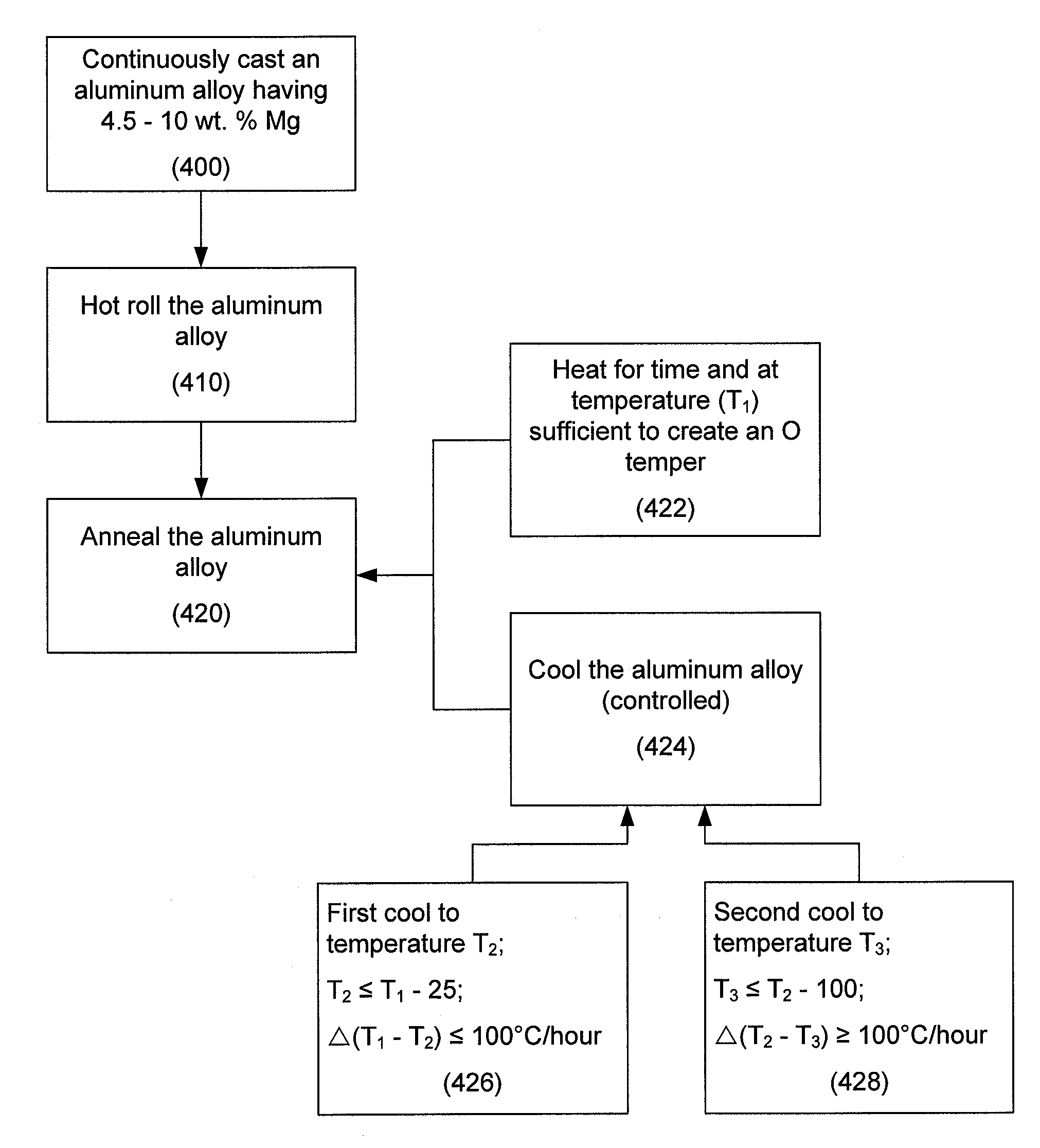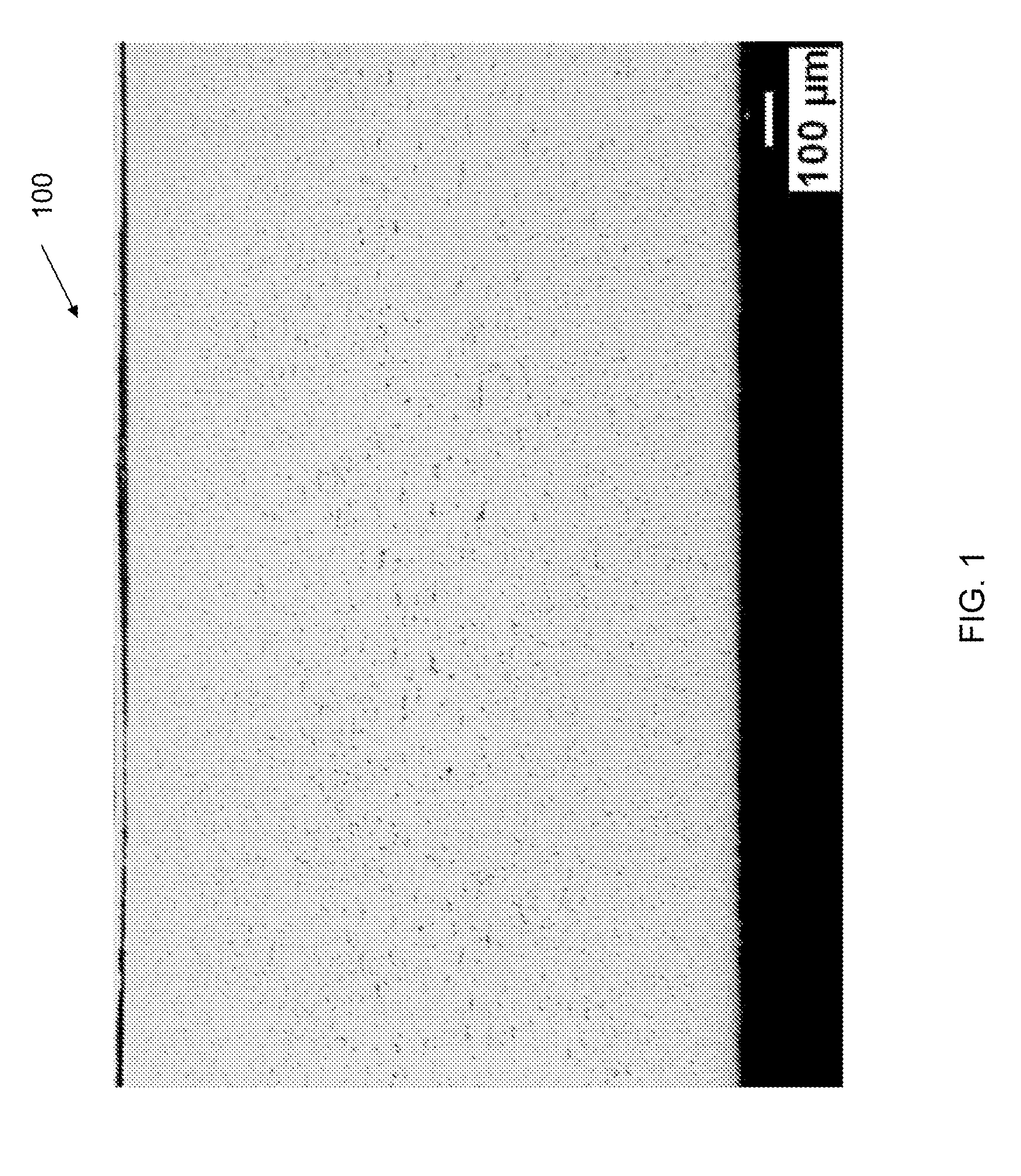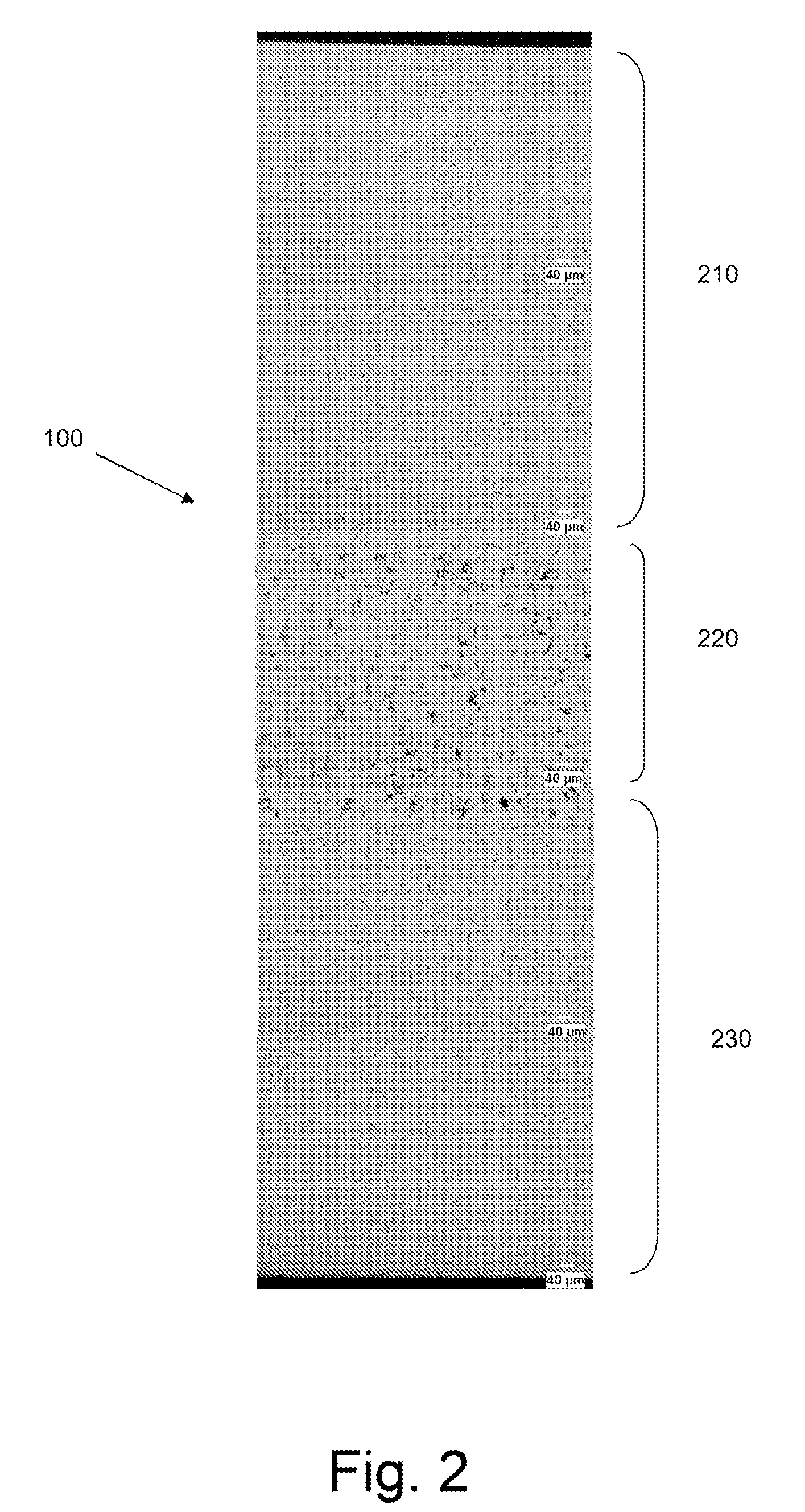Corrosion resistant aluminum alloys having high amounts of magnesium and methods of making the same
- Summary
- Abstract
- Description
- Claims
- Application Information
AI Technical Summary
Benefits of technology
Problems solved by technology
Method used
Image
Examples
example 1
High Magnesium Alloy (6.4 wt. %) Produced via a Flash Anneal
[0050]An aluminum alloy consisting essentially of 6.4 wt. % Mg and 0.5 wt. % Zn, the balance being aluminum, incidental elements and impurities is strip cast. The strip cast alloys has a thickness of 3.4 mm and a width of 0.41 m. Coupons (0.75 m) are removed from the alloy and are allowed to cool to room temperature.
[0051]A first set of coupons (“Alloy 1”) are subsequently reheated to 850° F. and are hot rolled until a nominal thickness of about 1 mm is reached. Alloy 1 is then subjected to flash anneal conditions. Specifically Alloy 1 is heated in a salt bath to 950° F. for 60 seconds, and then quenched by air jets at a rate of about 90° F. / second.
[0052]A first sample of Alloy 1 (Alloy 1-a) is then age sensitized and then subjected to intergranular corrosion testing per ASTM G67-86. Another sample of Alloy 1 (Alloy 1-b) is age sensitized and then subjected to a forming and paint bake cycle, which involved a transverse stre...
example 2
High Magnesium Alloy (6.4 wt. %) Produced via Slow Cool
[0055]Another set of coupons (0.75 m) are removed from the alloy of Example 1 (i.e., the aluminum alloy consisting essentially of 6.4 wt. % Mg and 0.5 wt. % Zn, the balance being aluminum, incidental elements and impurities) and are allowed to cool to room temperature. This second set of coupons (“Alloy 2”) are subsequently reheated to 850° F. and are hot rolled until a nominal thickness of about 1 mm is reached. Alloy 2 is then heated in a furnace to 850° F. and held for 4 hours. Next, Alloy 2 is allowed to cool in the furnace until the temperature fell to 400° F. over a period of 5.5 hours (an average cooling rate of 82° F. per hour). Next, the furnace was opened and further cooling to 200° F. occurred over an 1.5 hour period. This method represents a typical batch anneal in a furnace.
[0056]A first sample of Alloy 2 (Alloy 2-a) is then age sensitized and then subjected to intergranular corrosion testing per ASTM G67-86. Anothe...
example 3
High Magnesium Alloy (8 wt. %) Produced via Slow Cool
[0059]An aluminum alloy consisting essentially of 7.96 wt. % Mg and 0.032 wt. % Zn, the balance being aluminum, incidental elements and impurities is strip cast. The strip cast alloys has a thickness of 3.4 mm and a width of 0.41 m. Coupons (0.75 m) are removed from the alloy and are allowed to cool to room temperature. The coupons (“Alloy 3”) are subsequently reheated to 750° F. and are hot rolled until a nominal thickness of about 1 mm is reached. Alloy 3 is then processed according to the processing steps of Example 2.
[0060]Alloy 3 is then age sensitized and then subjected to intergranular corrosion testing per ASTM G67-86. Alloy 3 passes the intergranular corrosion tests realizing a mass loss of only 9.2 mg / cm2. Alloy 3 is subjected to stress corrosion cracking (SCC) tests according to ASTM G44-88 after age sensitization. A stress level of 75% of yield strength in the L direction is selected for this test. Each test is done in...
PUM
| Property | Measurement | Unit |
|---|---|---|
| Length | aaaaa | aaaaa |
| Time | aaaaa | aaaaa |
| Cooling rate | aaaaa | aaaaa |
Abstract
Description
Claims
Application Information
 Login to view more
Login to view more - R&D Engineer
- R&D Manager
- IP Professional
- Industry Leading Data Capabilities
- Powerful AI technology
- Patent DNA Extraction
Browse by: Latest US Patents, China's latest patents, Technical Efficacy Thesaurus, Application Domain, Technology Topic.
© 2024 PatSnap. All rights reserved.Legal|Privacy policy|Modern Slavery Act Transparency Statement|Sitemap



